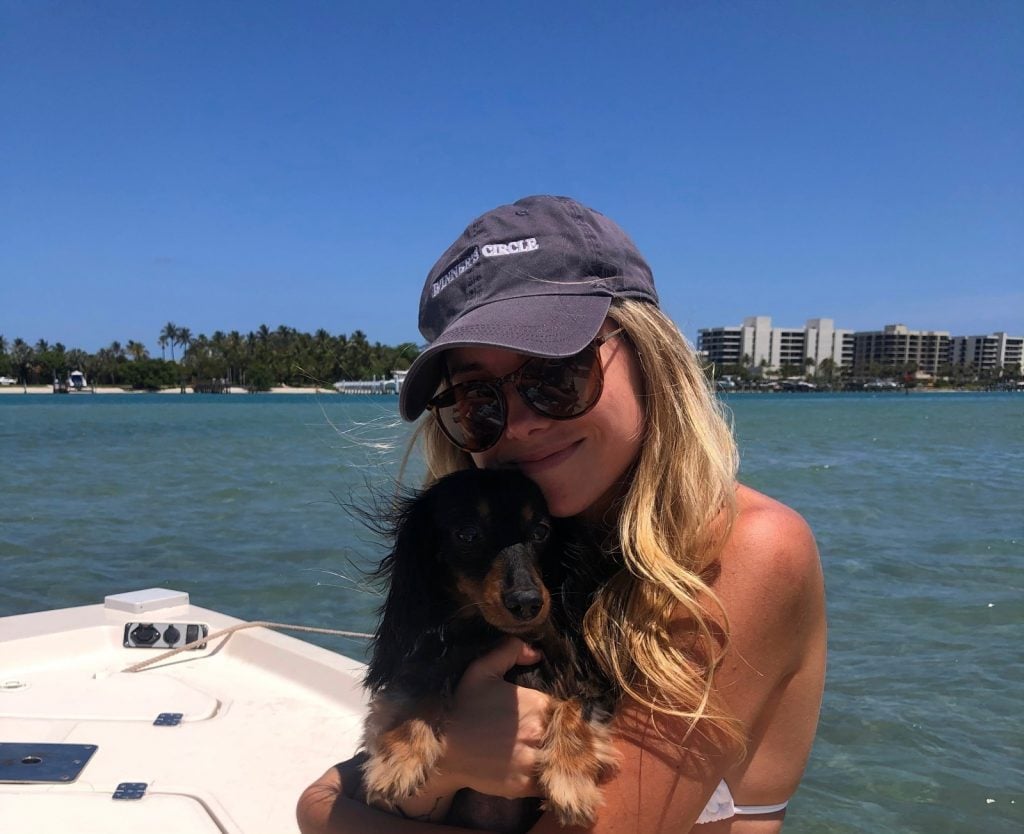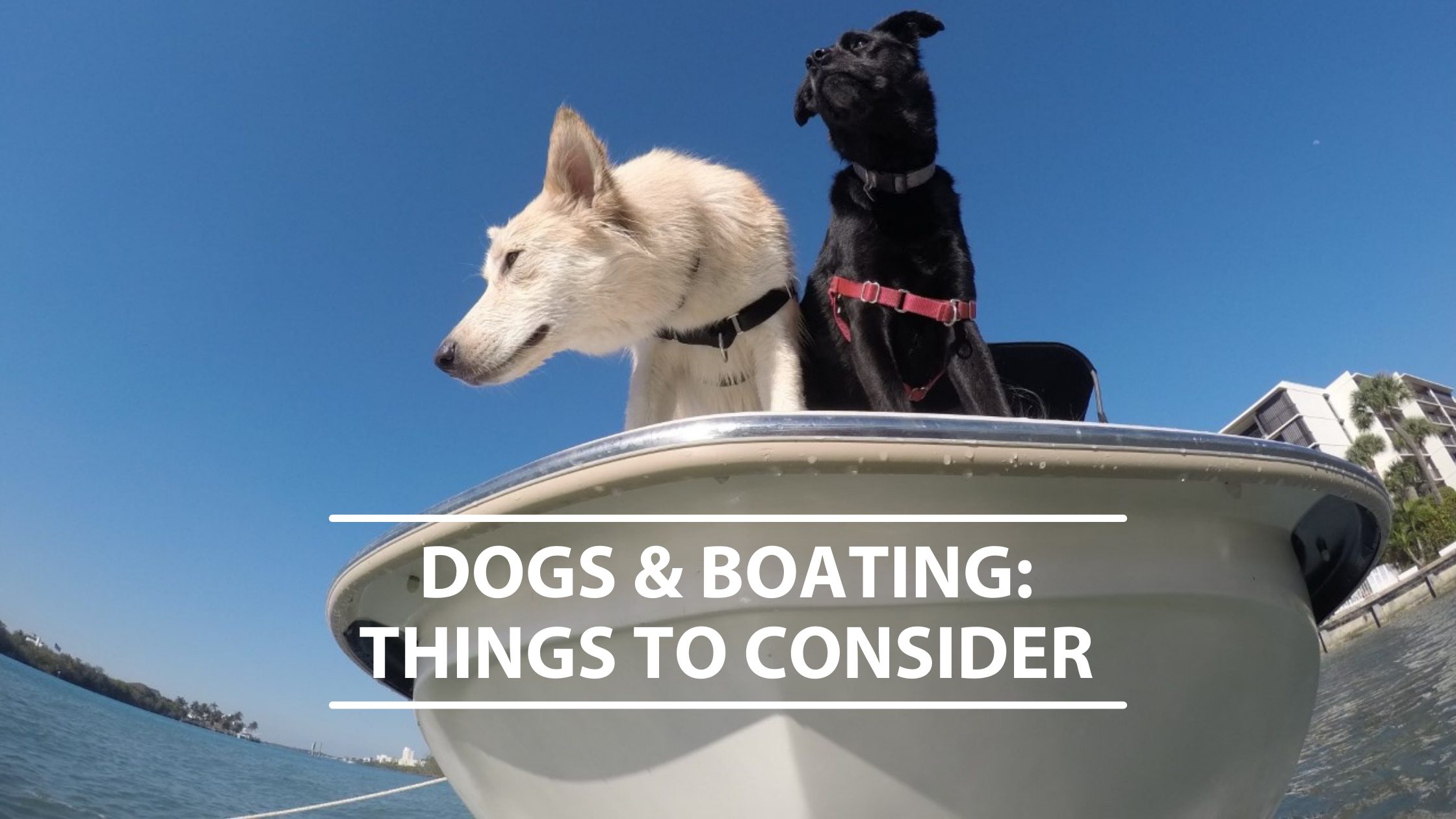
Dogs And Boating: Things To Consider
Beach bag in-hand and cooler loaded, you’re ready to head out the door and enjoy a boat day! You’ve been dreaming about this day all week and the conditions are perfect—calm waters and gorgeous weather. You reach for the doorknob and glance down, only to be met with literal puppy dog eyes staring back at you. The guilt washes over you. Don’t they deserve to enjoy the day, too? Rather than sitting at home, sad and awaiting your return? You reach for the leash and decide to bring your faithful companion. They jump and spin with excitement! Great choice! Now here are some things to consider before boating with Fido:
Potty Breaks -
When is the last time they used the restroom? If the answer is recently, you should be set for a while. Or so you hope. However, in the event your pup needs to relieve themself at the sandbar, it’s a good idea to bring doggy bags and paper towels. You don’t want to be the jerk that caused children to flee their happy place because of floating poo. Not going to the sandbar? No problem, there are plenty of ways you can allow your dog to relieve themselves when cruising the Intracoastal, but if you’re going to be out at sea for more than 4-6 hours, it may be best to leave those puppy dog eyes at home (as much as it hurts). Puppy pads are an option when on the open ocean with your dog, but if they have never used one before, don’t count on it and be prepared for an accident in the cockpit.
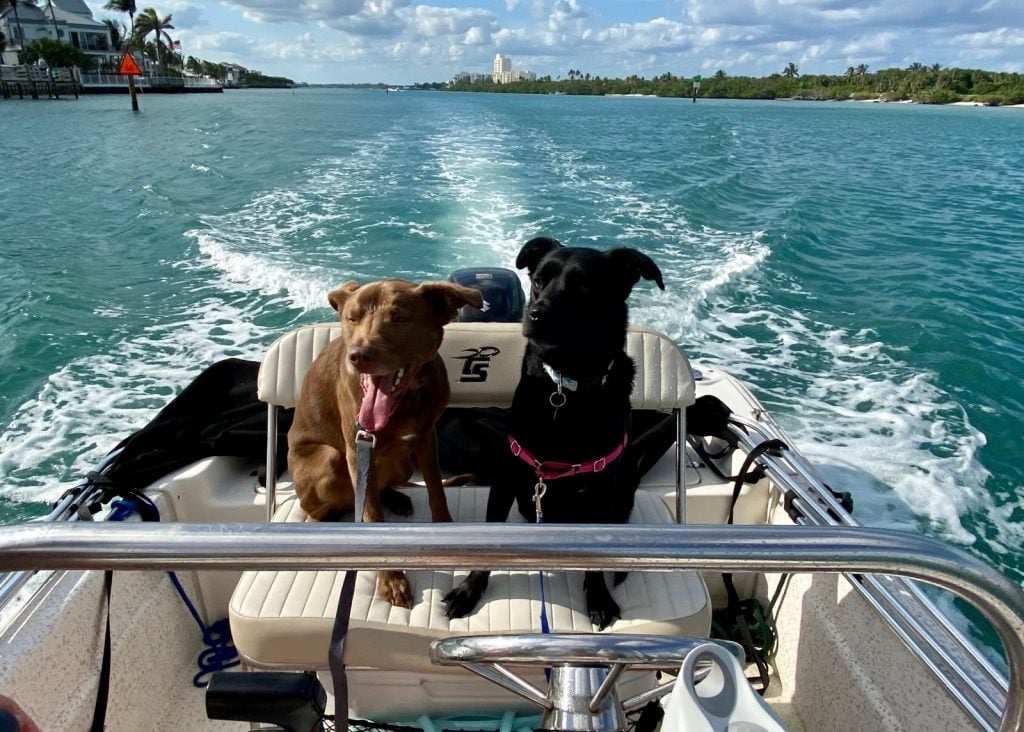
Dining -
Chances are, you fed your fur child before leaving. If you didn’t, or you know that this is going to be an extended trip, remember to bring them adequate food and water for this adventure. A hangry dog is more likely to steal your sandwich right out of your hand when you’re not looking. Next thing you know, you’re the hungry one. As for water, it is important to encourage your dog to drink the fresh clean water you packed and NOT from the sea! Sea water will make your dog ill and result in an untimely trip to the vet. Finally, bring some treats! When boating, dogs will encounter a lot of distracting sights, sounds, and sniffs! They may be so overwhelmed or distracted that they end up not listening to your commands. Treats will keep them behaving the way you want them to.
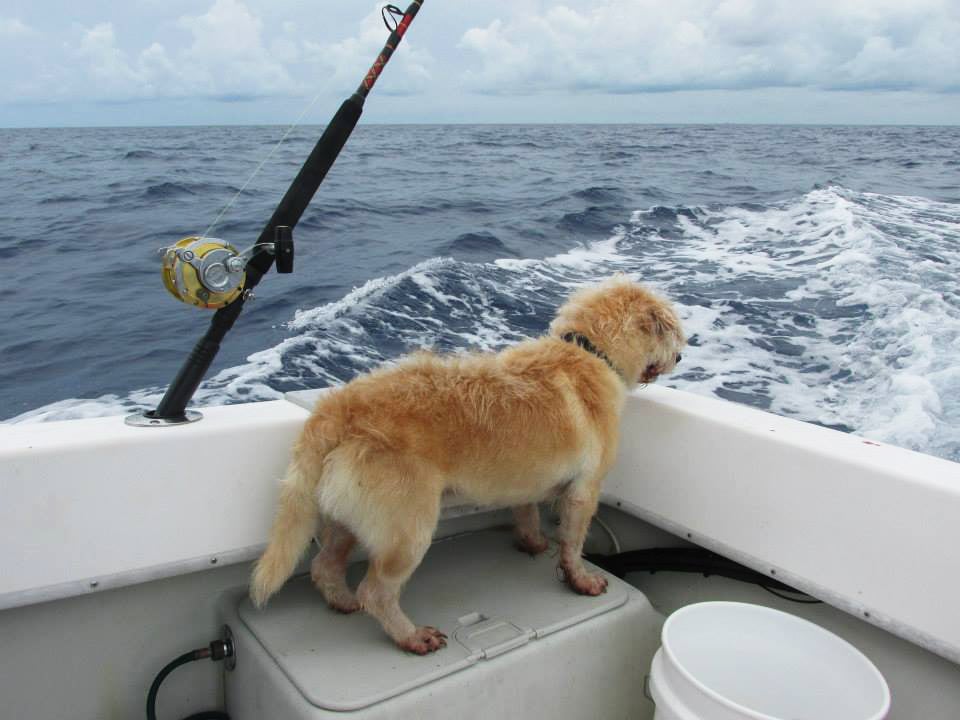
Safety -
The most important thing to consider is the safety and comfortability of your pet. If this is their first time on the boat, be prepared to take them home if they’re not enjoying it. Also take into consideration they may or may not get seasick. Keep a close eye on how they are behaving. If they seem off, or you suspect your dog is sick, do what you can to make them comfortable and keep them calm. But don’t count them out on future boat days just yet! There are medications you can get from your vet that will enable a sea-sick dog to handle a boat day with their best friend.
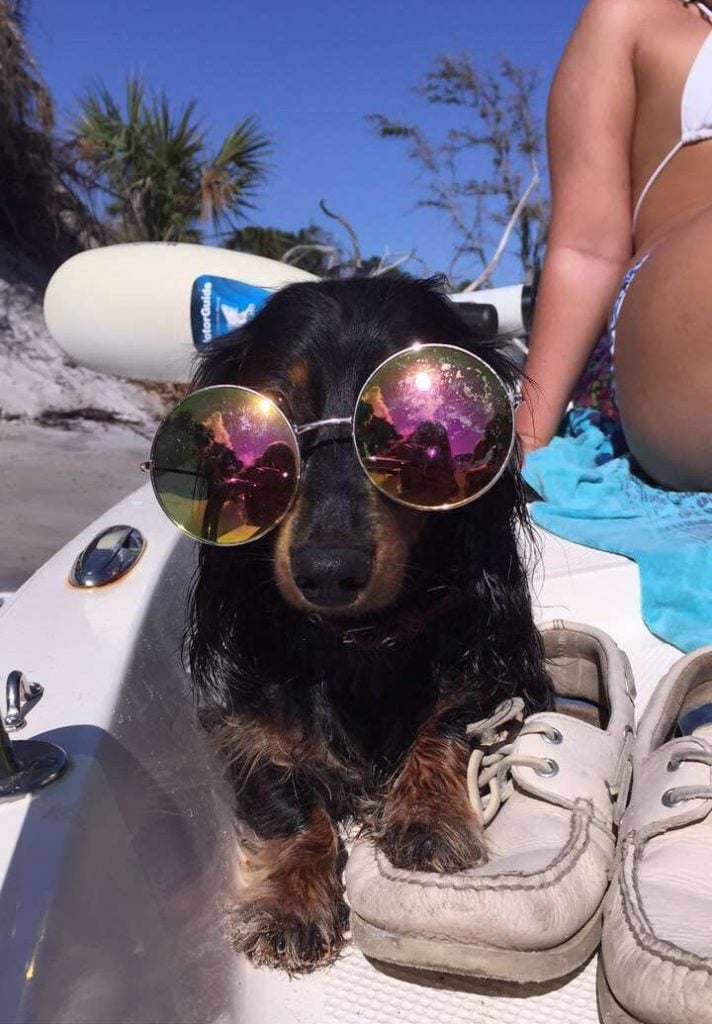
Collar vs. Harness. This may not seem like a big deal but is something to think about. Having a harness on your pup for boating is a safer alternative to a simple collar. A collar, in an emergency, could potentially choke your dog whereas a properly fitted harness, would provide a safer constraint on your dog and more leverage for you to grab if you need to haul them back on board or yank them out of harm's way.
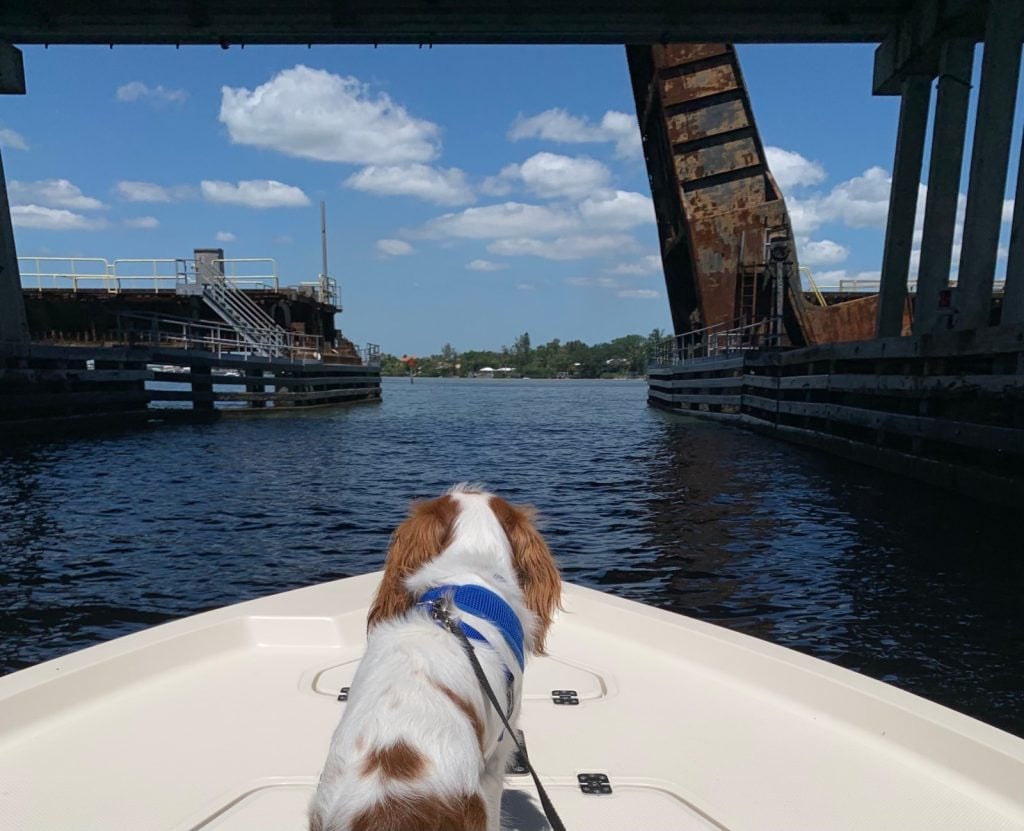
Retractable leashes are convenient when walking around the neighborhood, but not so much on the boat. Your pup may get a little too excited and try to jump off, not knowing they could end up as chum. If you have a retractable leash, this may end in a disaster but using a standard leash will help prevent this. It’s important to make sure that at no given point they have enough leash length to take a dive. Heaven forbid they do, IMMEDIATELY turn off the propeller!
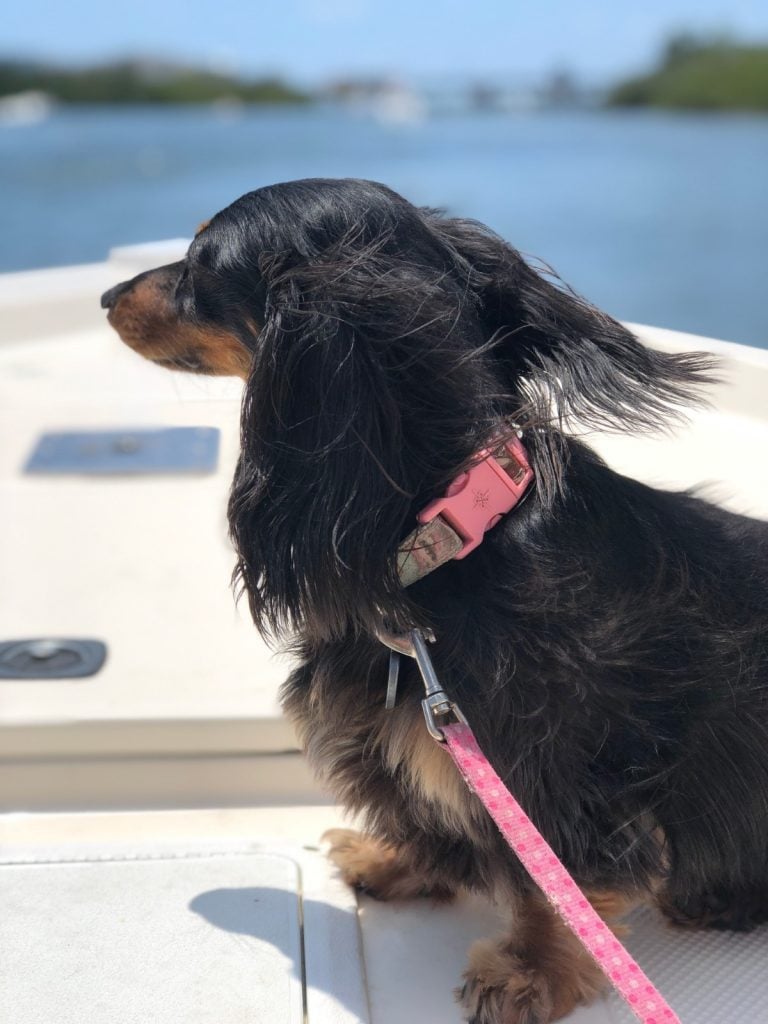
Life jackets—yes, they make those for dogs—are recommended but not legally required. There are plenty of articles and arguments all over the web that will encourage you to use a life vest for your companion, however, that is entirely up to you. Some dogs are completely immobilized when you put something on them other than their collar or harness, while others don’t mind at all. Life vests WILL give your dog the ability to float if the vessel capsizes or they simply fall overboard. Most dogs cannot swim for a lengthy amount of time, and that is something to consider when deciding on using a doggy life vest. If you don’t like the idea of having one on them from the start, an alternative is to have one for them in the ditch bag (an emergency bag) just in case dire circumstances arise.

Sunscreen, because some dogs can get sunburnt, too! Certain breeds, dogs with white or thin coats, and dogs with light-pigmented noses are vulnerable to the harsh UV’s they may be exposed to on a boat day, so be prepared to lather your dog up with protection. While there are sunscreens made specifically for our four-legged counterparts, you can use certain human sunscreens on them as well. If you go this route, make sure you’re using one that does not contain zinc oxide or para-aminobenzoic acid (PABA). These chemicals are toxic to dogs if ingested! You also want to make sure that it is unscented, waterproof, and has an SPF of 30. If you have a dog-safe human sunscreen, it is important to monitor them after the application to make sure they are not licking it off. Just because it doesn’t have toxic, life-threatening ingredients doesn’t mean they should be ingesting it.
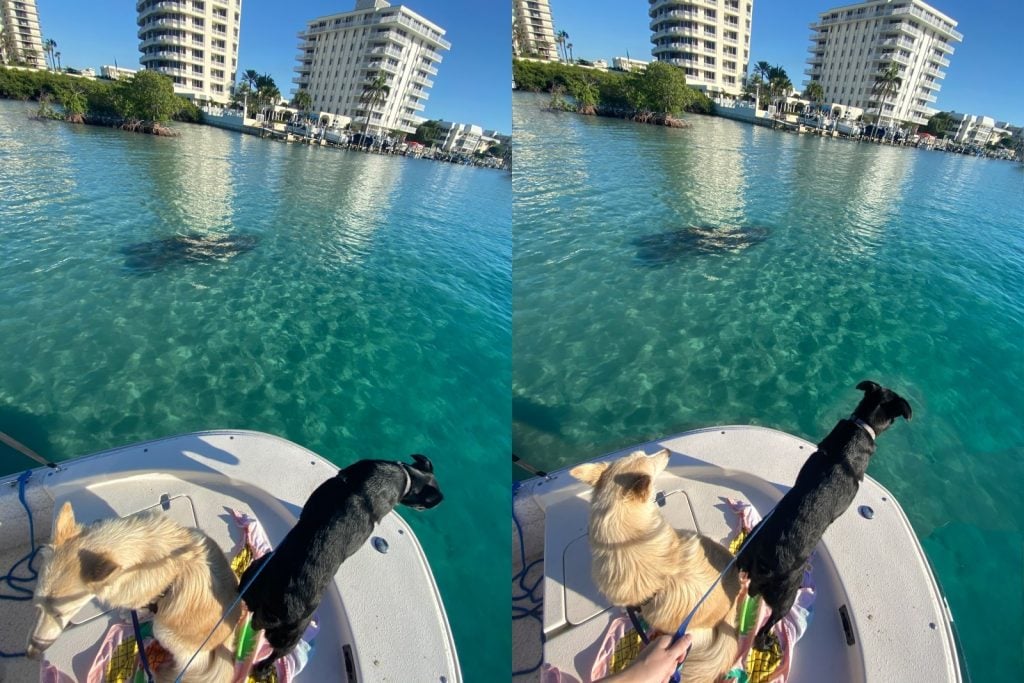
After taking the right steps and being proactive, having your dog with you for your day on the water could only improve your time and enjoyment! But not being prepared or having any plans in place, could leave you regretting reaching for that leash at all. We encourage you to do the necessary research into your breed, state regulations, and the weather before boating with your best friend! Your vet will be a great resource for further information, since they know your pet about as well as you do. Happy boating!
